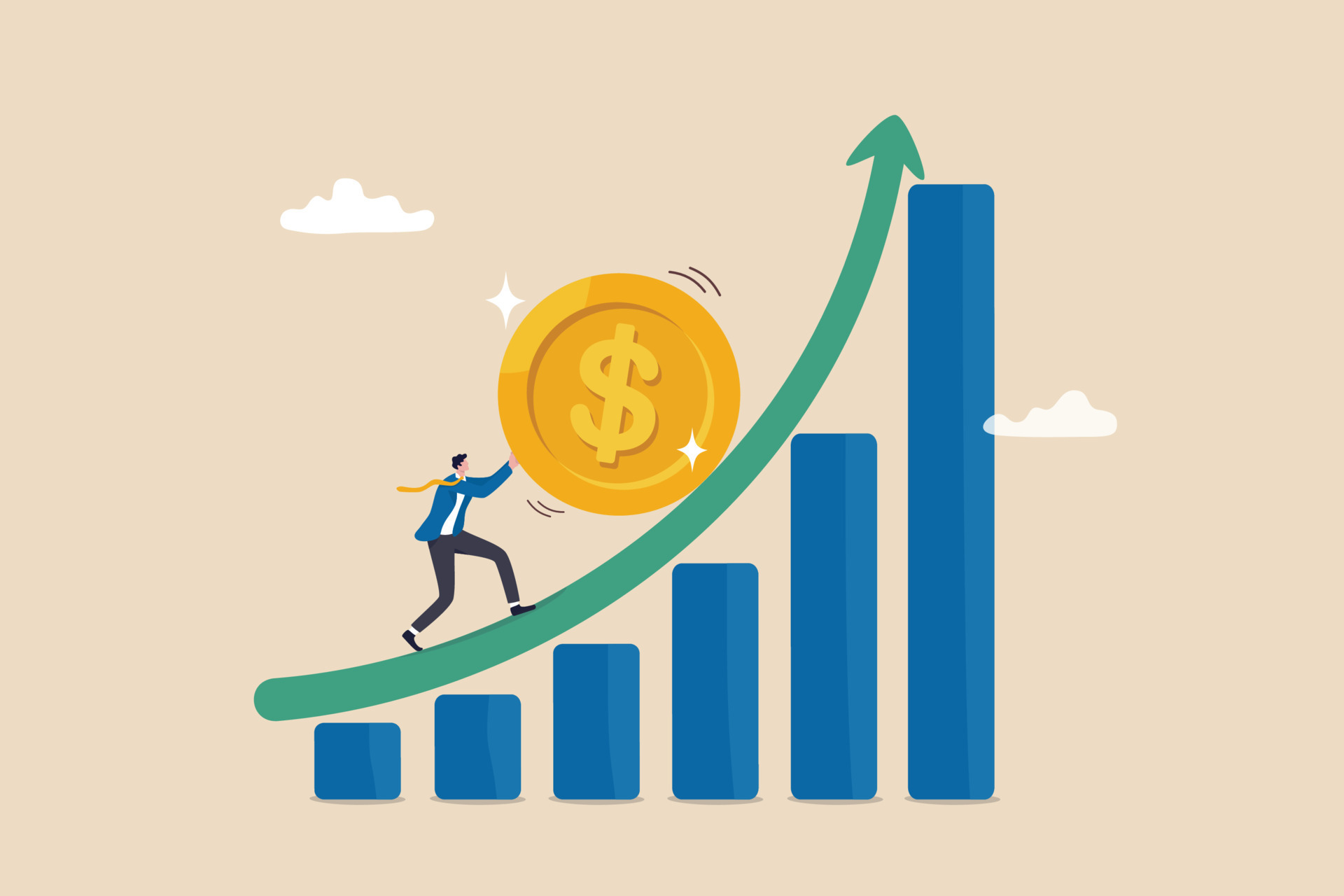The concepts of compound interest alongside inflation and diversification have been used to measure financial literacy.
Understanding the power of compound interest is crucial to quadrupling your wealth. This financial concept, often referred to as the “miracle of compound interest,” has the ability to transform modest savings into substantial wealth over time. Compound interest allows individuals to earn interest on both the initial principal amount and the accumulated interest from previous periods, resulting in exponential growth of investments. In this article, we will delve into the components of compound interest, explore the key variables involved, and shed light on how this phenomenon works to create accelerated wealth accumulation.
Components of understanding compound interest
Understanding compound interest involves considering the key variables below:
Principal Amount (P): This is the initial sum of money or investment on which the interest is calculated. It serves as the starting point for the compounding process.
Interest Rate (r): The interest rate is the percentage applied to the principal amount to determine how much interest is earned over a specific period. It is typically expressed as an annual rate and must be converted to a decimal for calculations.
Time (t): Time represents the duration for which the investment remains in the account or the loan remains outstanding. It is usually measured in years, but it can also be expressed in fractions of a year (such as months or days) depending on the compounding frequency.
Compounding Period (n): The compounding period refers to the frequency at which interest is calculated and added to the principal. Common compounding periods include annually, semi-annually, quarterly, monthly, or daily. The more frequent the compounding, the greater the effect on the final amount.
Future Value (FV): The future value represents the total amount after a given period, including both the principal amount and the accumulated compound interest. It shows how the investment or loan grows over time.
Difference between simple and compound interest
| Aspect | Simple Interest | Compound Interest |
| Interest Calculation | Interest is calculated only on the initial principal amount. | Interest is calculated on the initial principal amount, and also on the accumulated interest from previous periods. |
| Formula | Simple Interest = P * r * t | Compound Interest = P * 1+rnnt– P |
| Frequency of Interest Calculation | Interest remains constant over time | Interest is reinvested or added back to the principal at regular intervals (annually, semi-annually, quarterly, monthly, etc.) |
| Growth of Investment | Linear growth over time | Exponential growth over time |
Compound Interest Formula
The formula to calculate the future value (FV) with compound interest is:
FV = P *(1+rn)n*t
Where:
FV = Future Value
P = Principal amount (the initial sum of money or investment)
r = Annual interest rate (expressed as a decimal)
n = Number of compounding periods per year
t = Number of years
In this formula, the principal amount (P) is multiplied by the factor (1 + rn) raised to the power of (nt). The factor (1 + rn) represents the growth rate for one compounding period, and the exponent (nt) accounts for the total number of compounding periods over the given time duration (t). The result is the future value of the investment, which includes both the principal amount and the accumulated compound interest.
The Power of compound interest
The magic and power of compound interest lie in its ability to generate significant wealth and financial growth over time. This phenomenon is often referred to as the “miracle of compound interest” due to its remarkable effects. Here are some key points that highlight the magic and power of compound interest:
- Exponential Growth: Compound interest results in exponential growth of an investment. As interest is continually reinvested and added back to the principal, the investment base grows, leading to even higher returns in subsequent compounding periods. Over long periods, this compounding effect can substantially increase the total value of the investment.
- Accelerated Wealth Accumulation: Compound interest allows individuals to build wealth faster than they would with simple interest. By reinvesting the earnings, the interest is continually compounding, helping investors achieve their financial goals more efficiently.
- Long-Term Benefits: Compound interest is particularly effective when investments are held for an extended period. The longer the investment remains untouched, the more pronounced the compounding effect becomes. This emphasizes the value of starting to invest early to maximize the power of compound interest.
- Snowball Effect: Compound interest sets in motion a snowball effect, where the investment grows steadily at first, but as time goes on, the growth accelerates significantly. This creates a self-reinforcing cycle of growth that can have a substantial impact on wealth accumulation.
- Financial Freedom: With disciplined savings and smart investments, compound interest can lead to financial freedom and a comfortable retirement. By allowing money to work for the investor, the power of compound interest can significantly enhance one’s financial well-being in the long run.
Note: Compound interest whilst beneficial for investments, can work against borrowers with loans. On the downside, compounding interest can increase debts over time, so it’s essential for borrowers to be mindful of this effect and pay off high-interest debts as quickly as possible, such as credit card debt.
Take advantage of the power of compound interest with these tools
- Savings Accounts: Many banks offer savings accounts that compound interest either daily or monthly. While savings accounts provide low-risk investment options, the returns are generally modest compared to other investment vehicles.
- Certificates of Deposit (CDs): CDs are time deposits with fixed maturity dates and fixed interest rates. They typically offer higher interest rates than regular savings accounts, and the interest is compounded until the CD matures.
- Bonds: Bonds are debt securities issued by governments, municipalities, or corporations. They pay periodic interest (coupon) to bondholders, and some bonds are compounded semi-annually or annually until maturity.
- Mutual Funds: Some mutual funds reinvest dividends and capital gains back into the fund, leading to compounding of returns over time.
- Exchange-Traded Funds (ETFs): Like mutual funds, certain ETFs can reinvest dividends and capital gains to compound returns.
- Retirement Accounts: Retirement accounts often offer compound interest on investments, enabling tax-advantaged growth over the long term.
- Dividend Reinvestment Plans (DRIPs): DRIPs allow investors to reinvest dividends automatically to purchase additional shares of the same stock, leading to compound growth.
- Money Market Accounts: Some financial institutions offer high-yield savings or money market accounts with competitive interest rates, allowing for compounded growth.
- Equity Investments: Investing in stocks or shares of companies can provide the potential for both capital appreciation and dividends, which can be reinvested to compound returns.
Learning from Warren Buffet
Warren Buffett is one of the greatest investors of all time. “My wealth has come from a combination of living in America, some lucky genes, and compound interest”.
Conclusion
In conclusion, compound interest stands as a powerful financial tool that can work wonders for individuals seeking to grow their wealth over the long term. The magic lies in the exponential growth it offers, as interest is reinvested and added back to the principal, leading to a snowball effect of accelerated returns. By understanding the key variables involved in compound interest calculations and utilizing various compound interest investments, individuals can harness this powerful concept to secure their financial future. Whether it’s saving in high-yield accounts, investing in bonds, or utilizing retirement accounts with compound interest, the potential for financial freedom and substantial growth is within reach. Embracing the power of compound interest is like wielding a wealth management magic wand that can transform dreams into reality and pave the way for a financially secure tomorrow.
photo source: freepik
Article and News Disclaimer
The information provided on www.serrarigroup.com is for general informational purposes only. While we strive to keep the information up to date and accurate, we make no representations or warranties of any kind, express or implied, about the completeness, accuracy, reliability, suitability, or availability with respect to the website or the information, products, services, or related graphics contained on the website for any purpose. Any reliance you place on such information is therefore strictly at your own risk.
www.serrarigroup.com is not responsible for any errors or omissions, or for the results obtained from the use of this information. All information on the website is provided on an "as-is" basis, with no guarantee of completeness, accuracy, timeliness, or of the results obtained from the use of this information, and without warranty of any kind, express or implied, including but not limited to warranties of performance, merchantability, and fitness for a particular purpose.
In no event will www.serrarigroup.com be liable to you or anyone else for any decision made or action taken in reliance on the information provided on the website or for any consequential, special, or similar damages, even if advised of the possibility of such damages.
The articles, news, and information presented on www.serrarigroup.com reflect the opinions of the respective authors and contributors and do not necessarily represent the views of the website or its management. Any views or opinions expressed are solely those of the individual authors and do not represent the website's views or opinions as a whole.
The content on www.serrarigroup.com may include links to external websites, which are provided for convenience and informational purposes only. We have no control over the nature, content, and availability of those sites. The inclusion of any links does not necessarily imply a recommendation or endorsement of the views expressed within them.
Every effort is made to keep the website up and running smoothly. However, www.serrarigroup.com takes no responsibility for, and will not be liable for, the website being temporarily unavailable due to technical issues beyond our control.
Please note that laws, regulations, and information can change rapidly, and we advise you to conduct further research and seek professional advice when necessary.
By using www.serrarigroup.com, you agree to this disclaimer and its terms. If you do not agree with this disclaimer, please do not use the website.
www.serrarigroup.com, reserves the right to update, modify, or remove any part of this disclaimer without prior notice. It is your responsibility to review this disclaimer periodically for changes.
Serrari Group 2023




